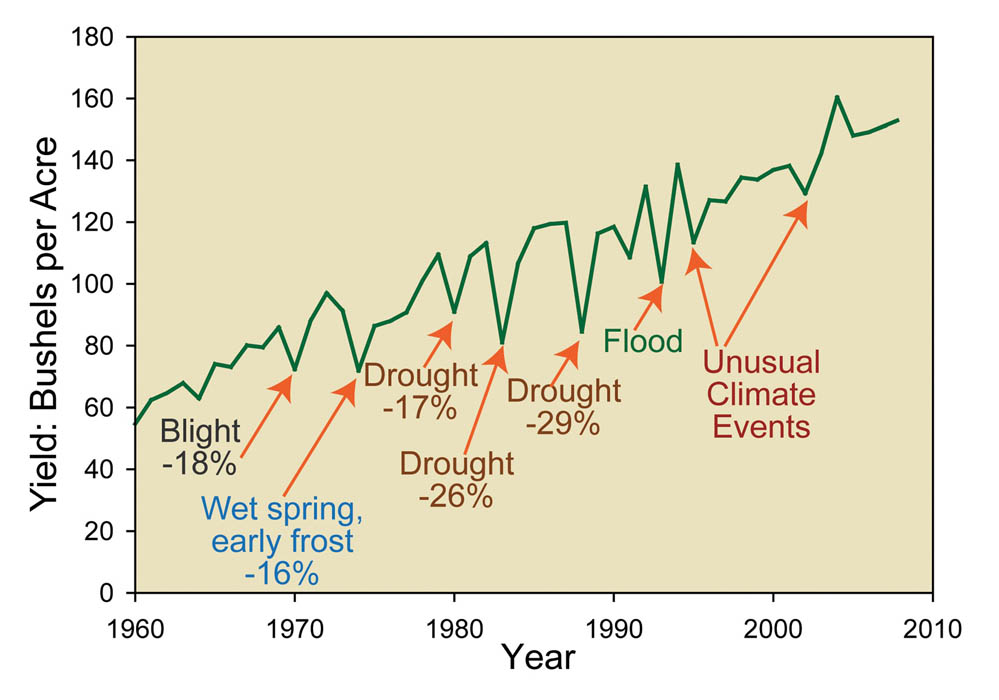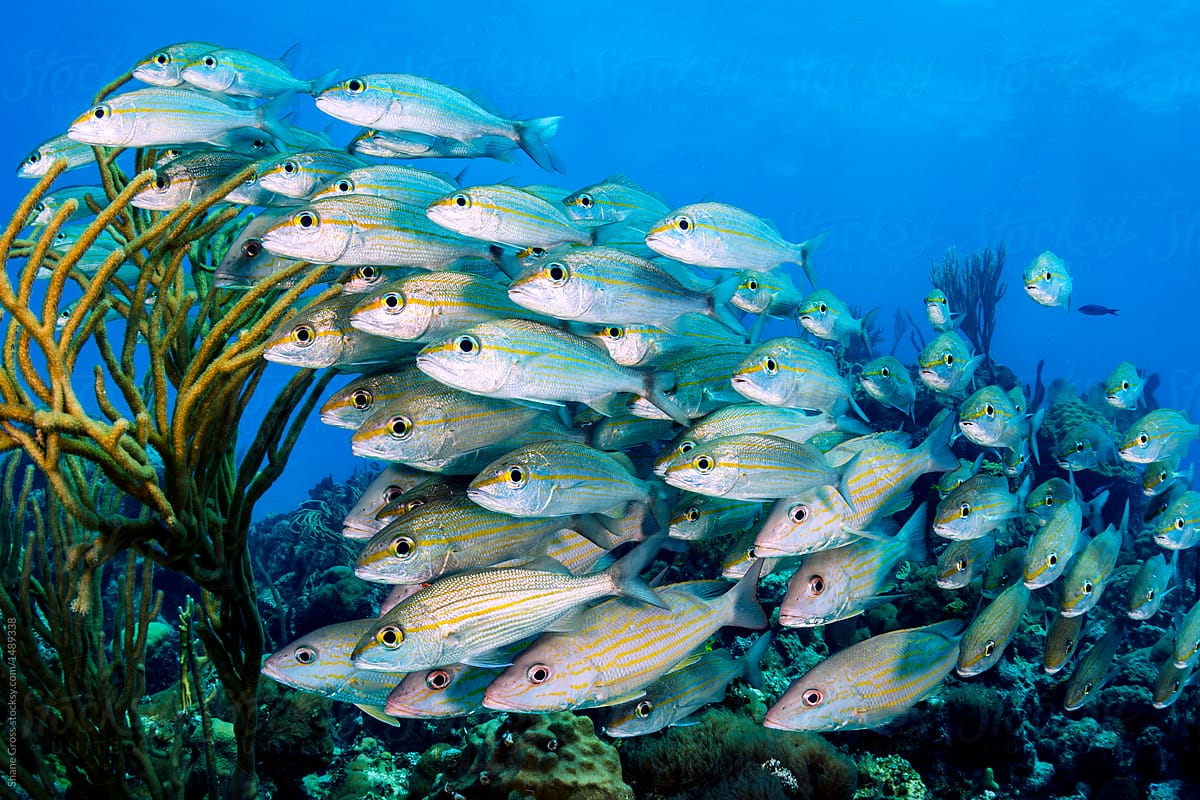
Climate Change Impact on Agriculture
According to the U.S. E.P.A.
Temperature changes and extreme weather events have affected food supply in the U.S. The graph indicates decreases in corn yields caused by climate events despite the fact that there have been technological improvements. One example is the higher nighttime temperatures that affected corn yields in 2010 and 2012 throughout the U.S. Farmers have also seen an increase in weeds, pests and fungi since these species prefer warmer temperatures. The higher carbon dioxide levels decrease the nutritional value of crops.
Similar to the U.S., other parts of the world have experienced negative impacts to agriculture due to climate change. Climate change is affecting food delivery, food production, food availability and food quality.
Climate Change Impact on Livestock
Livestock increase global warming due to methane release but are also negatively affected by climate change.
Extreme weather patterns affect livestock. Droughts decrease vegetation used in grazing, as well as corn production which is used as grain for animals. Heatwaves stress the animals and their food supply. Increased temperatures increase the possibility for disease and parasites. Veterinary practices may need to increase treatment of parasites and diseases which will impact food quality.

Climate Change Impact on Fisheries
Fisheries are already stressed due to overfishing and water pollution. Climate change adds more stress to this industry.
Fish and shellfish species have shifted their range to colder waters due to global warming. This puts other species into competition. Warmer oceans are linked to increases in marine diseases and changes in reproduction and migration. Acidic oceans harm the habitats that certain species rely upon as well as harming the species themselves.
